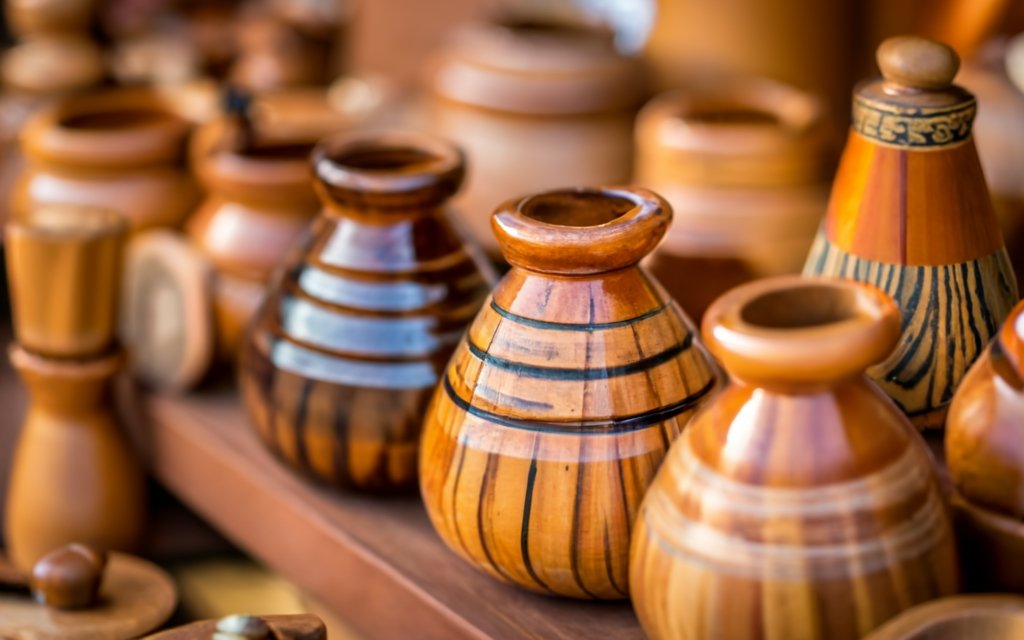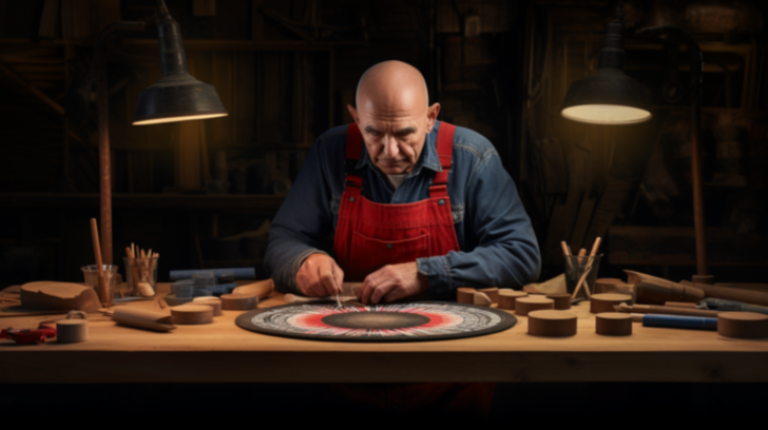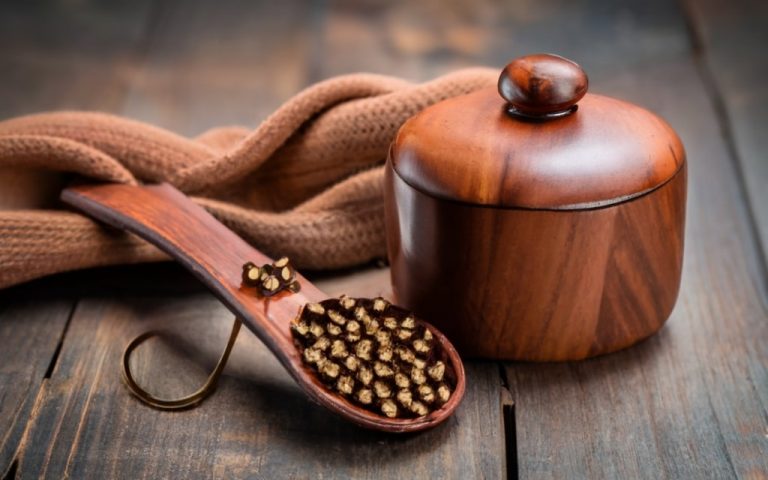Introduction: Wooden Accessories’ Significance as Cultural Icons
For generations, wooden items have served as symbols of customs, values, and beauty in several cultures. These accessories, which range from hair sticks and ornamental combs to fans and walking canes with significant cultural significance, exhibit fantastic craftsmanship. The preservation of wooden accessories presents the possibility of preserving cultural heritage, as traditional activities are threatened by globalization.
Characterizing Wooden Attachments and Their Cultural Importance
Wooden accessories are any wood-made items that complement a person’s style, whether functional or aesthetic. This includes fans, jewellery, pipes, glasses, spoons, bowls, walking canes, hair combs, and sticks. These accessories are indeed works of art because of the exquisite hand carvings and the inherent beauty of the wood grain.
Various kinds of wooden ornaments have profound symbolic meanings in many different civilizations. For instance, in some parts of Asia, elaborately carved hair combs and sticks may symbolize a woman’s age and married status. In African societies, wooden walking canes represent social position and tribal identification. Traditional dances honouring harvests and courtship customs throughout Asia and Europe use wooden fans.
Significant traditions and cultural identity are preserved by keeping these wooden objects held. They have significance for collectors and museums worldwide because of their heritage importance.
The Advantages of Using Cultural Icons as Wooden Accessory
A link between the past and present is created when wooden items are included in contemporary clothing and styling. The organic material and conventional patterns complement contemporary styles such as bohemian chic, rustic charm, and vintage revival. Social media influencers have also generated renewed interest in these accessories as fashion statements.
Supporting family-run enterprises and small-scale artisans who create these unique timber goods is another advantage. These companies can maintain traditional woodworking methods that could otherwise fade over time as demand rises. Local economies are also boosted by their success.
Using wooden accessories in cultural events and performances facilitates a more genuine portrayal of customs. Being visible during public festivities can inspire appreciation for culture and educate the next generation.
The Difficulties of Making Cultural Icons Out of Wooden Accessory
Ensuring wooden items are authentic and original is a significant difficulty as cultural symbols. True artisan works have a more profound cultural significance than cheap, mass-produced copies. It takes work to source wood that has been sustainably harvested and to verify production processes.
Antique wooden items can be challenging to maintain and care for. Exposure to moisture, sunshine, and temperature changes can harm older items’ wood, carvings, and structural integrity. It requires special handling, which raises the price.
Problems can occasionally occur when some cultures claim exclusive ownership of particular wooden artefacts, limiting other communities’ usage of those objects. It takes considerate historical context and polite conversation to navigate these delicate areas.
Conclusion: Wooden Accessories’ Significance as Cultural Icons
Wooden accessories offer a unique chance to meaningfully and physically connect with cultural history. These accessories’ exquisite craftsmanship and timeless beauty should be conserved for subsequent generations. Wooden artefacts can continue to span cultures and historical periods if handled with care and consideration.
Wooden Earrings & Cultural Treasures
Overview: Wooden Accessories’ Place in Cultural Heritage
Wooden decorations that symbolize local customs and belief systems have been revered by people worldwide for ages. These wooden items have evolved beyond their original uses to become essential components of the cultural legacies of entire civilizations. Their provenance, significance, conservation, and application in artistic endeavours offer priceless windows into humanity’s past.
Wooden Accessories’ Historical Significance in Various Cultures
Intricately carved chopsticks, combs, and hairpins throughout Asia are a reflection of the origins and social class. African tribal societies use wooden staffs and headdresses to represent their ancestry and social standing. Rustic wooden bowls and spoons are symbolic of generations-long family heritage throughout Europe.
Everyday objects like jewellery boxes, smoking pipes, and eyeglasses also have a history. The development of wooden accessories across time reflects technological changes, trading routes, resource utilization, and aesthetic preferences. Religious themes, local plant and animal emblems, and cultural stories are frequently included in their patterns.
The Significance of Wooden Accessories in Culture
Beyond their practical uses, wooden accessories frequently signify milestones, merit, and ceremonial duties. For instance, carving courtship flutes is a long-standing custom among the Lakota tribe in North America. In several Asian countries, a girl’s transition into womanhood is symbolized by hair sticks handed by an older family member.
Wooden accoutrements are used in regional rituals to symbolize virtues, including bravery, fertility, beauty, love, and respect for the natural world. Passing on these sentimental objects ensures the preservation of the cultural spirit.
Preserving Wooden Accessories as Cultural Heritage Is Crucial
Antique timber accessories are in danger of being lost to modernization, yet their preservation is essential to maintaining cultural identity. The public can access family heirlooms when donated to museums, and their integrity can be preserved via careful handling and presentation.
Craftspeople can continue to use age-old woodcarving methods by producing replicas. New accessories are made eco-friendly by moral decisions like using non-toxic coatings and wood that has been certified.
Conclusion: Wooden Accessories’ Importance in Cultural Heritage
Beyond just being aesthetically pleasing, timber items provide us with a concrete link to humanity’s origins, values, and knowledge. Preserving and honouring their cultural heritage is beneficial to our lives and future generations.
The Craftsmanship of Wooden Attachments as Icons of Culture
Introduction: Wooden Accessories’ Artistry and Craftsmanship as Cultural Icons
The superb craftsmanship of timber accessories transforms them from practical items into highly valued cultural icons. These little sculptures are painstakingly carved, joined, lacquered, and decorated by skilled woodworkers. They are accessible art forms representing creativity, values, and talents because they may be worn as jewellery, hair ornaments, canes, and other accessories.
The Methods and Equipment Applied to Craft Wooden Accessories into Cultural Icons
Wood bending, carving, woodburning, and marquetry are examples of specialist methods used in the creation of wooden accessories. Artisans use specialized chisels, lathes, saws, and sanding tools to shape materials. Magnifying lenses and other visual aids are necessary for intricate patterns.
Stains, paints, oils, and lacquers can be applied to protect goods from harm and highlight the natural wood grain. Certain areas give rise to distinctive ornamental designs. For example, the reddish-hued lacquering of Chinese wood carvers belonging to the Dong minority is well-known.
It takes years of effort to become proficient in these subtle techniques. Cultural woodworking traditions are maintained through the transfer of knowledge to apprentices.
The Value of Accuracy and Detail in Wooden Accessory as Cultural Symbols
The best wooden accessories have subtle ornamental elements, including polished surfaces, tiny carvings, inlaid metals, and delicate openwork. This kind of precision requires extreme skill and concentration. For instance, tiny, precise cuts are needed when hand-carving dragons, lotus blooms, and other Chinese designs onto furniture, fans, and hair sticks.
The craftsman’s commitment to the history and values of his culture is embodied in this exquisite attention to detail. The effort further enhances the accessory’s value and charm as wearable art.
The Imagination and Creativity of Wooden Accessory as Cultural Icons
Even though many motifs are derived from tradition, artists add unique compositions and contemporary aspects to their works to infuse them with innovation. Modern Tibetan wood carvers invest fresh life into traditional symbols such as lotus blossoms by blending them with abstract shapes or creating wearable wooden pendants from semi-precious stones.
Creative accents with a global flair serve as “wood ambassadors,” promoting awareness of this creative legacy. Their distinctiveness draws collectors and adds new chapters to the enduring history of woodmaking.
Final Thoughts: Wooden accessory artistry as cultural icons
Because of their artistic vision and generational mastery of carving skills, artists turn ordinary wooden objects into priceless cultural treasures. Because of the unmatched artistry of their handcrafted accoutrements, they should be preserved as symbols of our shared human heritage.
Wooden Accessory Table: Style and Cultural Significance Comparison
Overview: An in-depth examination of wooden accessories as cultural symbols
This comparative table compiles essential data regarding the wide range of worldwide timber accessories that symbolize cultural heritage. Emphasizing construction techniques, distinctive design components, symbolic interpretations, and application scenarios yields insightful information.
Table comparing ten examples of wooden accessories from various cultures; columns include the name of the accessory, the culture from which it originated, the materials used, the construction methods, the characteristic elements of the visual style, the symbolic cultural meaning of the accessory, and the cultural activities and rituals associated with it.
The Various Wooden Accessory Styles as Cultural Icons
The table data shows that local hardwoods that are easy to cut and put together with lacquers or joinery are preferred by most people. Nonetheless, unique regional designs are evident, ranging from intricate Khmer floral headdresses to Maori pounamu neck ornaments. In numerous items, wood features are complemented by materials such as tusk, bone, and jewels.
Design motifs incorporate geometric patterns, flora and animals, and cultural narratives. Symbolism pertains to virtues such as bravery, procreation, and respect for the natural world. The accessories are legendary in culture because of their close ties to local values and ways of life.
Wooden Accessories’ Cultural Significance in Various Cultures
The examples emphasize using wood accessories in public status displays, initiations, dances, and ceremonies. Their presence serves to preserve cultural customs and memories. Giving gifts privately also symbolizes ideals like morality and love.
Passing these priceless items to subsequent generations fosters an appreciation of their cultural legacy. Contributions to museums allow for greater dissemination, and careful handling protects delicate, centuries-old objects.
Concluding Remarks: Utilizing the Wooden Accessory Table to Make Knowledgeable Clothing Selections as Cultural Icons
Fashionistas, collectors, and scholars can use this authoritative table to better comprehend the variety of wooden items available, make thoughtful stylistic decisions, and contribute to the preservation of their living history. Beyond being flashy display pieces, their significance is enhanced by understanding their origins and meaning. With our help, craftspeople all across the world may keep creating wooden icons that are a reflection of humanity’s priceless knowledge.
Wooden Accessories’ Future as Cultural Icons
Introduction: Wooden Accessories’ Development as Cultural Icons in the Fashion and Style World
Wooden accessories have become sought-after standout pieces with their artisanal roots and strong traditions. With the increasing focus on sustainable fashion, their future is bright. Wooden accessories, which combine modernity with tradition and environmentally safe materials, have the potential to become even more significant cultural symbols.
The Impact of Innovation and Technology on Wooden Accessory as Cultural Icons
More intricate wood accessory shapes are possible because of contemporary manufacturing techniques like 3D printing and laser cutting, which also cut waste. CNC carving combines expert craftsmanship with digital patterns.
Toxic varnishes are replaced by natural substances like seaweed and bamboo sap in new finishes. These developments facilitate manufacturing scaling without sacrificing originality or quality.
The Possibility of More Customization and Personalization as Cultural Icons in Wooden Accessories
Wearers now want bespoke wooden jewellery and spectacles with carved initials, birthstones, or other symbols to stand out from the crowd. Couples commission etched wooden combs, hairpins, and hand fans with their names and special dates as wedding favours.
More self-expression is made possible by this niche customization. Direct sales to customers receptive to modified or blended cultural designs benefit artisans.
The Value of Keeping Wooden Accessories as Cultural Icons in Balance Between Tradition and Modernity
While innovation promotes expansion, producers of wooden accessories must be mindful of cultural nuances. Misuse can be avoided by viewing traditions as inspiration rather than as a fad. Technological innovations such as fair trade commerce and eco-materials can ethically expand access to traditional crafts.
Services for repairing antiques aid in the restoration of treasured family items. This art form will survive since carving skills are passed down. Wood’s future is strengthened when its roots are respected.
Final Thoughts: Wooden Accessories’ Exciting Future as Cultural Icons
Wooden accessories hold a special place in between tradition and style. Blending handcrafted artistry, cultural significance, and cutting-edge design can significantly aid in spreading awareness. As buyers and producers, we promote this eco-friendly medium because it honours diversity and helps communities worldwide that depend on the timeless appeal of wood for their identity and means of subsistence.


